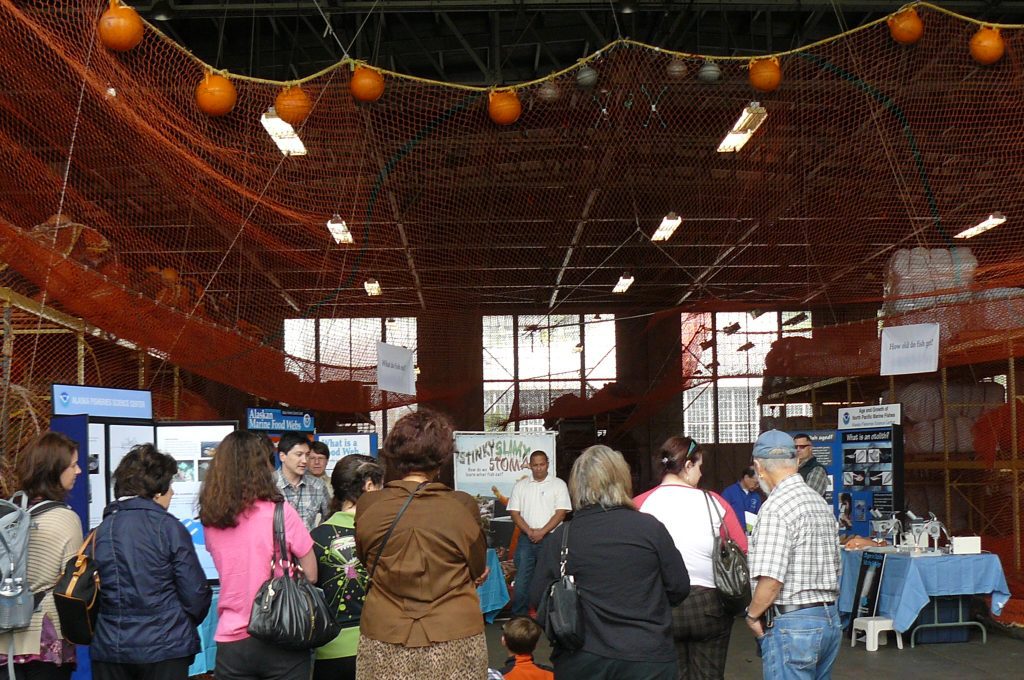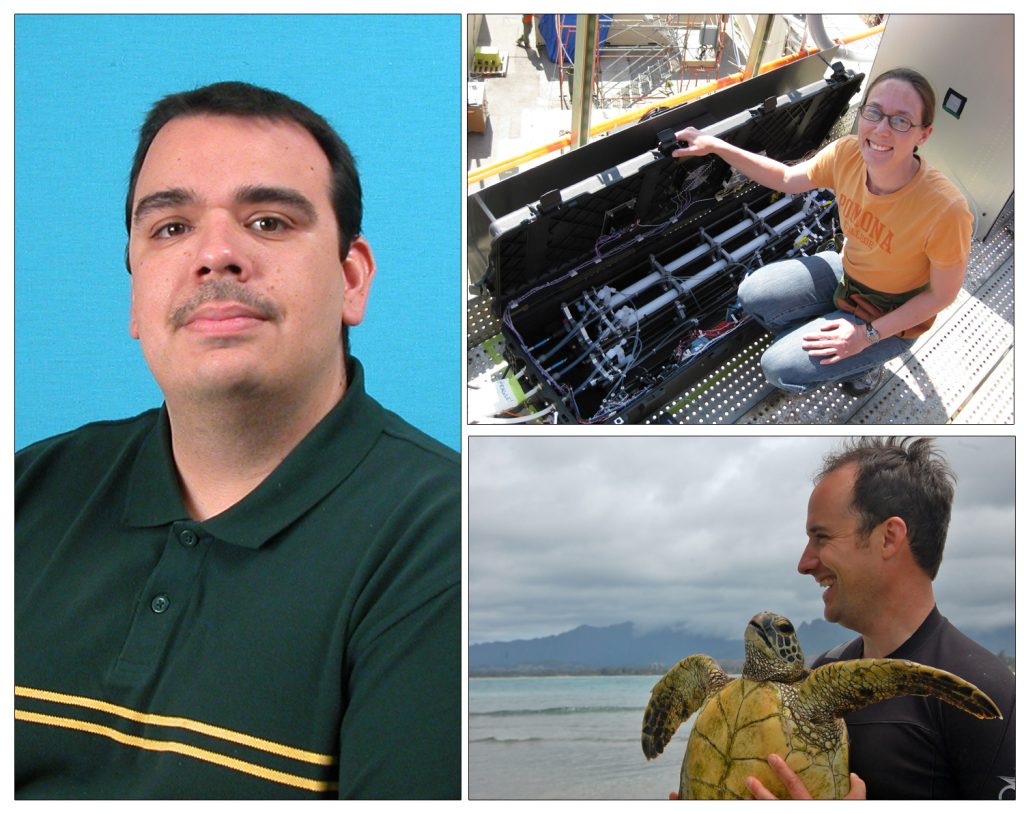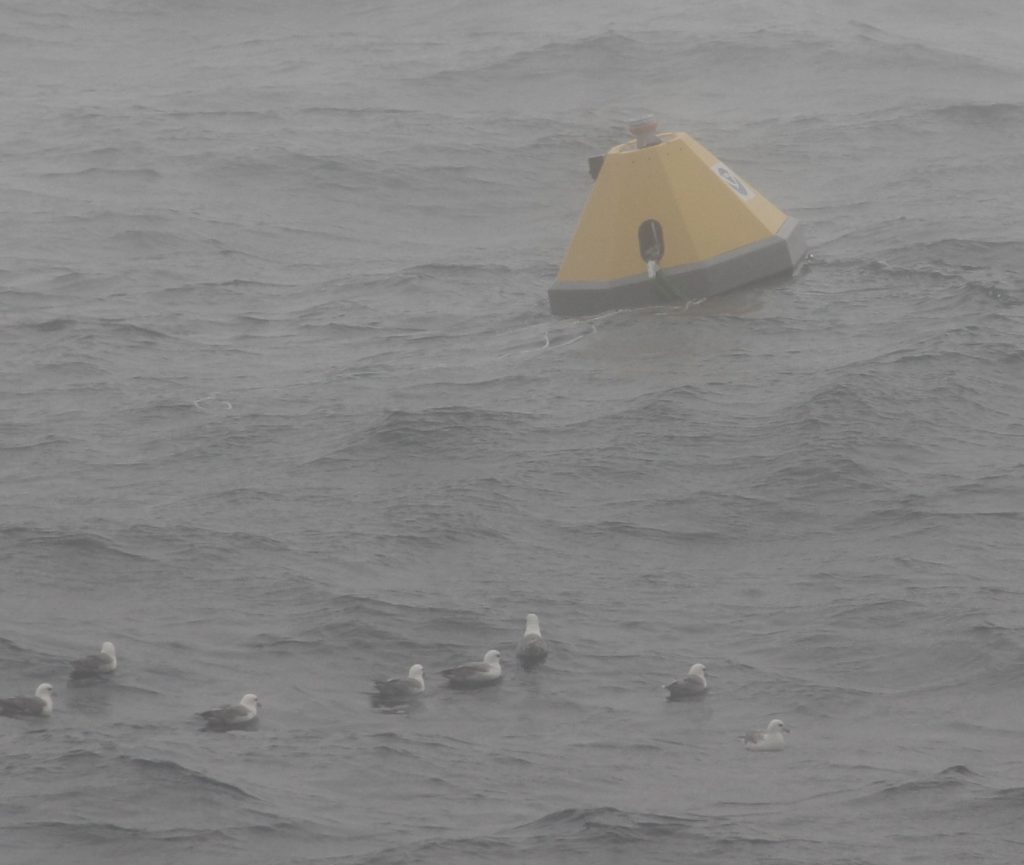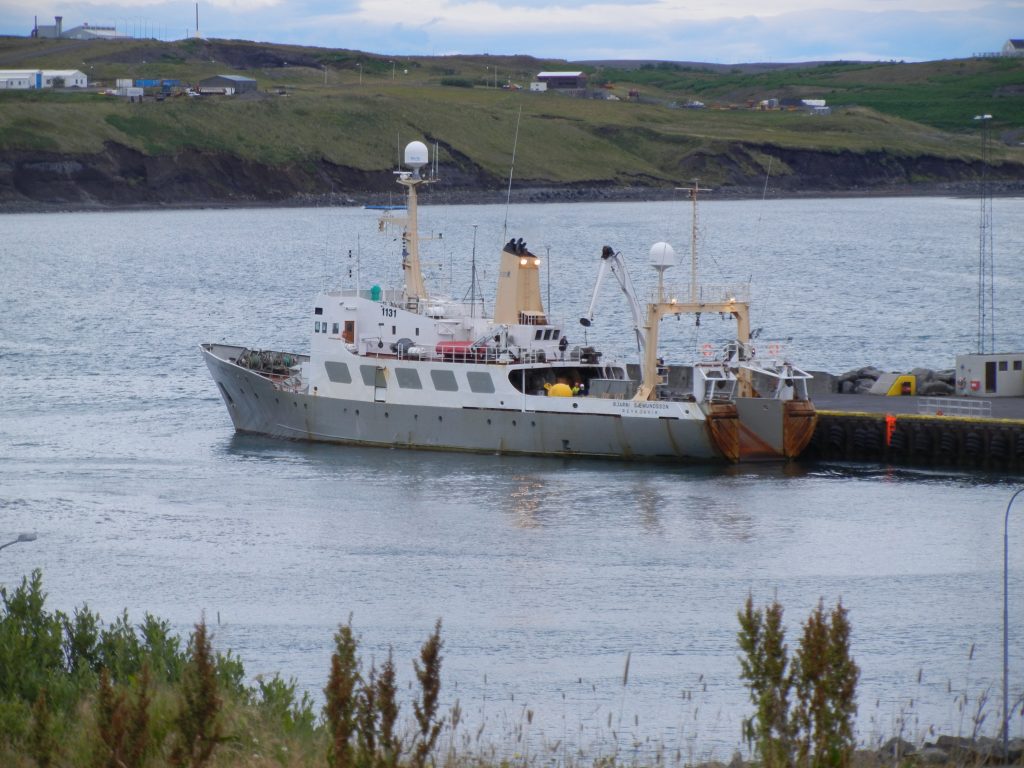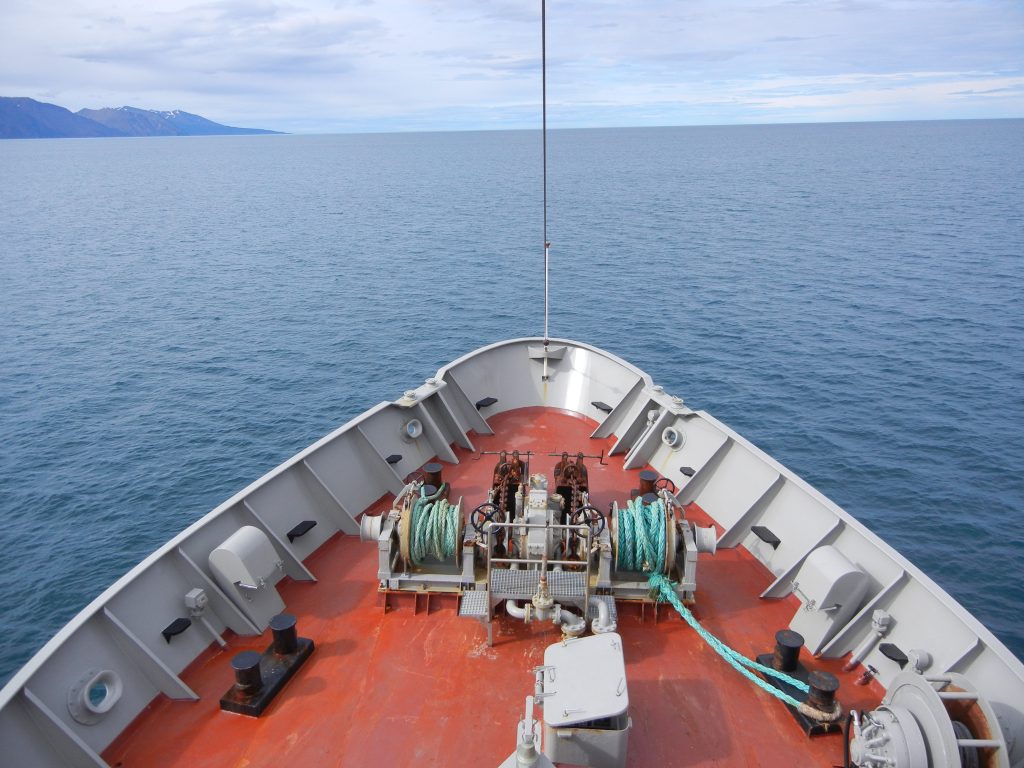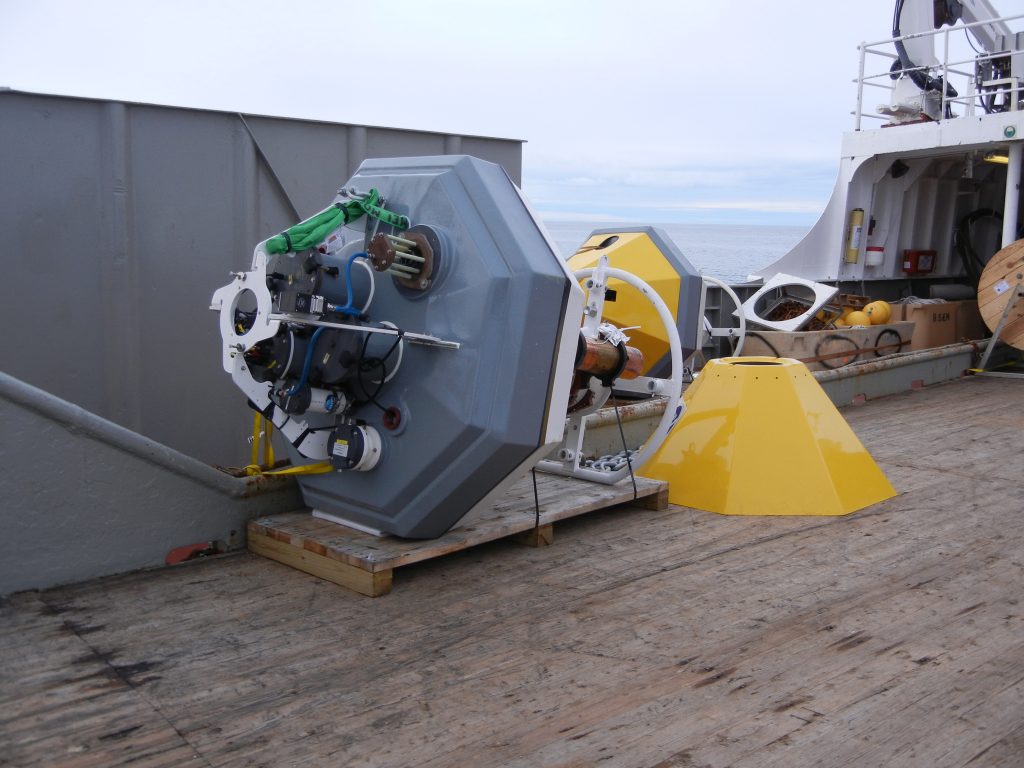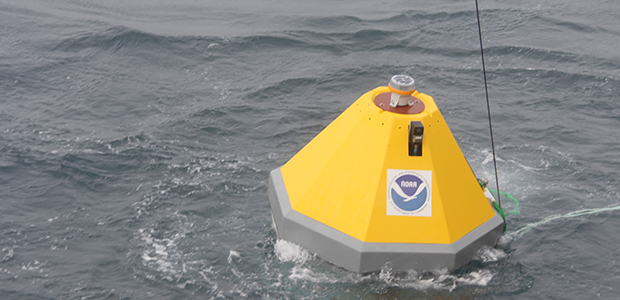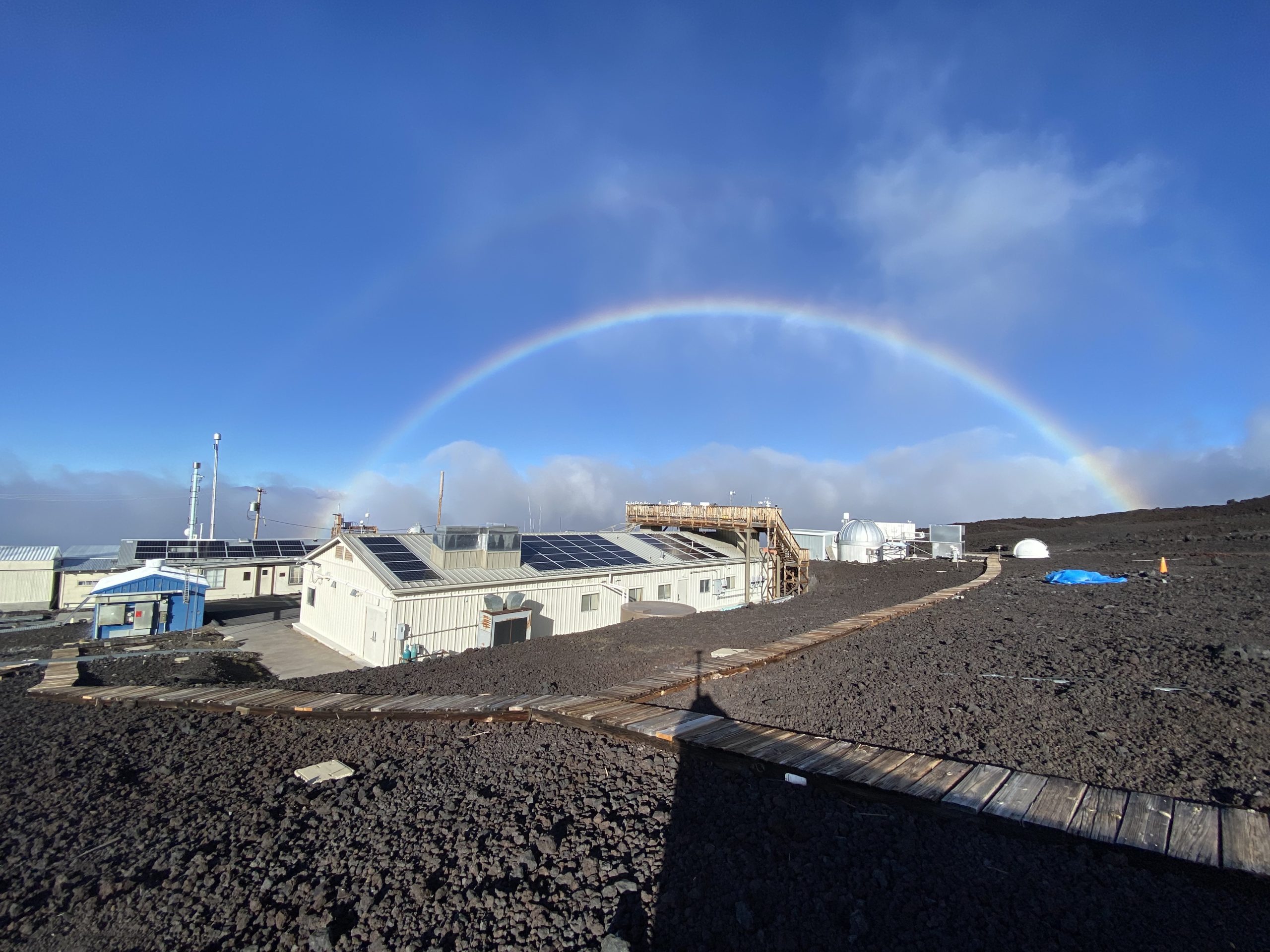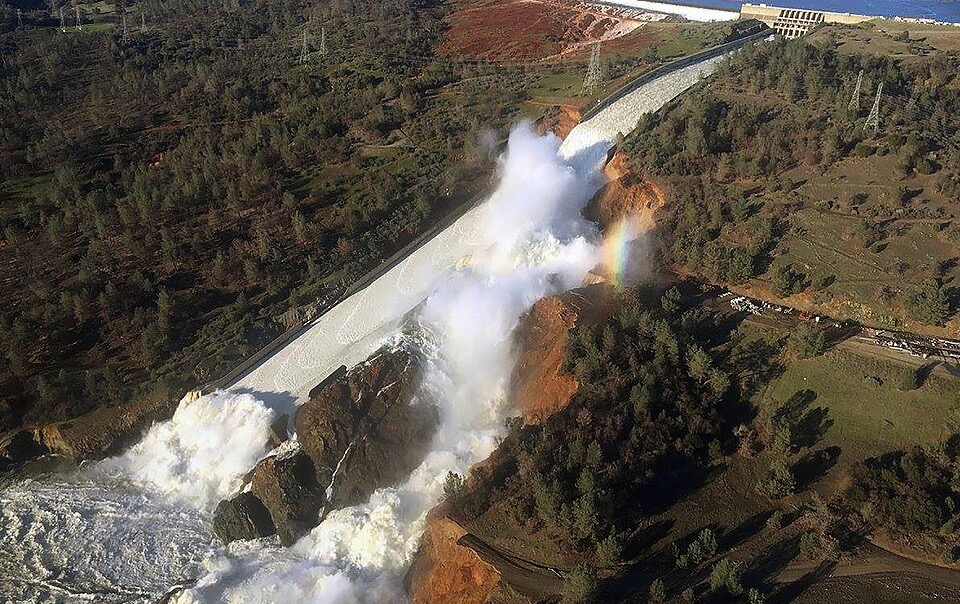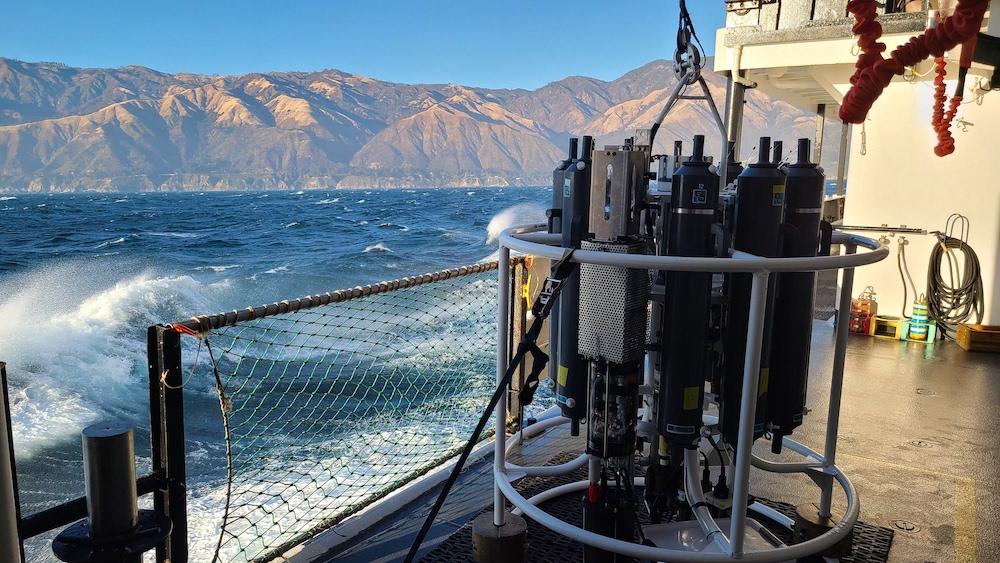NOAA’s Pacific Marine Environmental Laboratory in partnership with the Marine Research Institute in Iceland deployed the first high-latitude ocean acidification monitoring buoy in the Atlantic Ocean in early August. The moored buoy is the first of its kind to be deployed north of the Arctic circle in a region where very little is known about how carbon dioxide (CO2) is entering the ocean environment.
Scientists at PMEL have been studying carbon uptake and ocean acidification in the North Pacific since 2007 on the Papa mooring in the Gulf of Alaska, but until now there was no such mooring in the North Atlantic. Quantifying and understanding variability, particularly in a region where there is vast uptake of anthropogenic CO2 from the atmosphere is critical.
“Carbon dioxide is absorbed and penetrates to much deeper levels in the North Atlantic as compared to the North Pacific,” said Jeremy Mathis, Ph.D., Oceanographer at NOAA’s Pacific Mairne Environmental Laboratory. “This buoy will help us better understand how and where our oceans are acidifying and how these waters get transported to other parts of the world.”
PMEL’s Carbon Program has been documenting the evolving state of the ocean carbon cycle and how it is changing over time for 30 years. The oceans are absorbing about 25% of the CO2 we release into the atmosphere and this absorption is changing the chemistry of the seawater, a process called ocean acidification.
Understanding this process is critical as more corrosive waters affect shellfish and other marine creatures. The Iceland mooring will be a crucial addition to the Global Ocean Acidification Observing Network, a new effort to knit together observations made by dozens of countries into a comprehensive picture of how ocean acidification is affecting oceans and coasts around the world.
The mooring and MAPCO2 monitoring sensor was developed and deployed by NOAA’s PMEL with support from the NOAA’s Ocean Acidification Program (OAP) and NOAA’s Ocean Climate Observation Program (OCO). This technology has been successfully transferred to the commercial sector, where is it now it now being used by scientists around the world to measure ocean acidification.
For more information please visit the Iceland mooring web page at PMEL: http://www.pmel.noaa.gov/co2/story/Iceland
Contact: Lauren Koellermeier, lauren.koellermeier@noaa.gov, 206-526-6810
